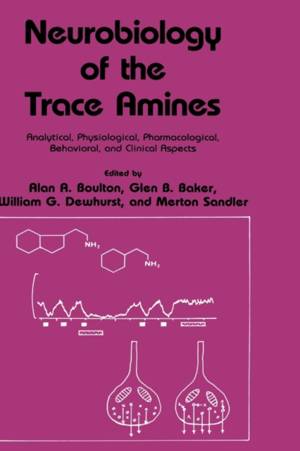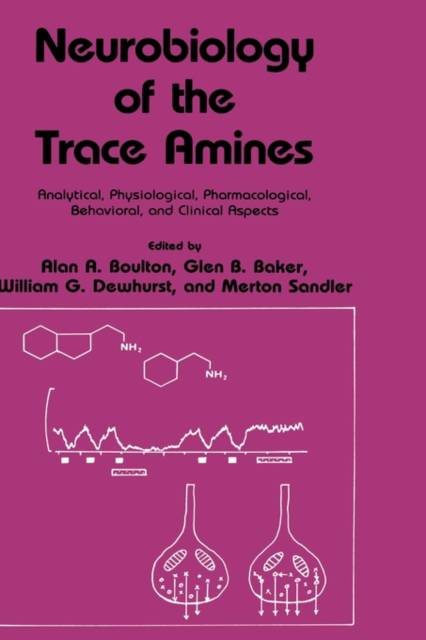
- Afhalen na 1 uur in een winkel met voorraad
- Gratis thuislevering in België vanaf € 30
- Ruim aanbod met 7 miljoen producten
- Afhalen na 1 uur in een winkel met voorraad
- Gratis thuislevering in België vanaf € 30
- Ruim aanbod met 7 miljoen producten
Zoeken
Neurobiology of the Trace Amines
Analytical, Physiological, Pharmacological, Behavioral, and Clinical Aspects
€ 251,45
+ 502 punten
Omschrijving
Many of the trace amines-more correctly called biogenic amines- have been known for decades, but because of their tiny concentra- tions (0. 01-100 ng/g) in brain, it was only after the development of sophisticated analytical techniques (such as mass spectrometry) that they could be identified and quantitated in nervous tissue. There are now more than 20 of them and most are related to the catecholamines and 5-hydroxytryptamine both structurally and metabolically. Their pharmacological and physiological properties make them prime candidates for a transmitter or neuromodulator role and many of them elicit profound behavioral syndromes after injection--one of them, phenylethylamine, has even been referred to as nature's amphetamine. In the clinical sphere several have been shown to be involved in: Parkinsonism, schizophrenia, depression, agoraphobia, aggression, hyperkinesis, migraine, hypertensive crises, hypertyrosinemia, he- patic encephalopathy, epilepsy, and cystic fibrosis. Thus the research reported here on these intriguing "new" substances will be of great interest to psychiatrists, neurologists, biochemists, pharmacologists, physiologists, psychologists, behaviorists and indeed to all those working in the neurosciences and related fields today. ACKNOWLEDGMENTS This book is based on the proceedings of Trace Amines and the Neurosciences, a meeting held at the University of Alberta, Edmonton, July 19-21, 1983. This meeting was organized as a Satellite Meeting of the Ninth Meeting of the International Society for Neurochemistry, held in Vancouver, July 10-15, 1983. International organizers of the satellite meeting were Drs. A. A. Boulton (Saskatoon), W. G. Dewhurst (Edmonton), G. B. Baker (Edmonton), and M. Sandler (London).
Specificaties
Betrokkenen
- Uitgeverij:
Inhoud
- Aantal bladzijden:
- 598
- Taal:
- Engels
- Reeks:
- Reeksnummer:
- nr. 37
Eigenschappen
- Productcode (EAN):
- 9780896030633
- Verschijningsdatum:
- 26/04/1984
- Uitvoering:
- Hardcover
- Formaat:
- Genaaid
- Afmetingen:
- 156 mm x 234 mm
- Gewicht:
- 1038 g

Alleen bij Standaard Boekhandel
+ 502 punten op je klantenkaart van Standaard Boekhandel
Beoordelingen
We publiceren alleen reviews die voldoen aan de voorwaarden voor reviews. Bekijk onze voorwaarden voor reviews.










